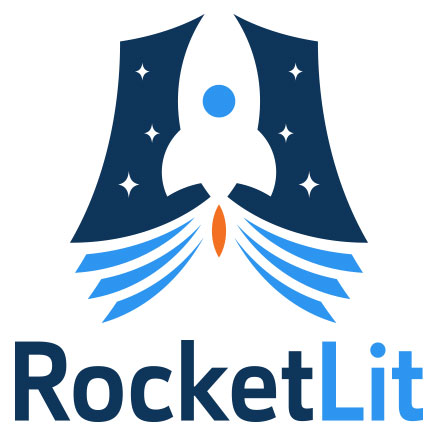Students are led through three inquiry lessons that focus on planetary distance and gravity in the solar system, as well as the tilt of the Earth, its rotation around the Sun, and how those affect the sunlight and heating of different regions. In the Make Extension, students use a model to investigate the patterns of lunar phases.
- Lesson 1
Solve: Satellite + Summer Snowboarding Mystery
Choose to solve either a live video mystery capturing satellites orbiting our Earth or an animated snowboarding vacation mystery. By the end of The Solve lessons, students discover orbital patterns of the Earth around the Sun (leading to season change) and the role of gravity in the solar system. (Live Solve: 45-70 minutes; Animated Solve: 75 minutes)
- Lesson 2
Make: Model Light Dispersion and the Earth-Sun System
Students will conduct three investigations about light dispersion and seasons, then demonstrate understanding of light distribution and heat intensity by creating a travel brochure for a destination in the Northern Hemisphere and Southern Hemisphere to explain how Earth’s tilt and the angle of the sun’s rays relate to seasons in each travel destination. (145 minutes)
- Lesson 2
Extension: Lunar Phases
Students will develop and use a model of the Sun-Earth-Moon system to describe the cyclic patterns of lunar phases, and eclipses of the sun and the moon. (75 minutes)
- Lesson 3
Engineer: Explore Scale and Build a Planet Amusement Park
Students discover the scale of planet diameter and their distance from the sun, then design a planet amusement park based on an accurate scale distance.
- Next Generation Science Standards
- MS-ESS1-1
- Develop and use a model of the Earth sun moon system to describe the cyclic patterns of lunar phases, eclipses of the sun and moon, and seasons. [Clarification Statement: Examples of models can be physical, graphical, or conceptual.]
- MS-ESS1-2
- Develop and use a model to describe the role of gravity in the motions within galaxies and the solar system. [Clarification Statement: Emphasis for the model is on gravity as the force that holds together the solar system and Milky Way galaxy and controls orbital motions within them. Examples of models can be physical (such as the analogy of distance along a football field or computer visualizations of elliptical orbits) or conceptual (such as mathematical proportions relative to the size of familiar objects such as students' school or state).] [Assessment Boundary: Assessment does not include Kepler’s Laws of orbital motion or the apparent retrograde motion of the planets as viewed from Earth.]
- Inquiry Scale
- Each lesson in the unit has an Inquiry Scale that provides directions on how to implement the lesson at the level that works best for you and your students.
- “Level 1” is the most teacher-driven, and recommended for students in 4th-5th grades. “Level 4” is the most student-driven, and recommended for students in 7th-8th grades.
- For differentiation within the same grade or class, use different inquiry levels for different groups of students who may require additional support or an extra challenge.
- Common Misconceptions
- Students sometimes assume that the Earth is flat since the ground they walk on is flat. Emphasize through the Solve that the Earth is round, and this round shape affects angles of sunlight.
- Students sometimes have a hard time believing that the Earth is moving and orbiting the sun because they can’t feel it. It is true that the Earth is moving at a very fast rate, but the reason they can’t feel it is because Earth is moving at a constant rate. Encourage students to think of how they feel in a car or airplane moving at a constant speed as opposed to a car or airplane that is quickly accelerating.
- Students tend to assume that every area of the world experiences seasons at the same time. Use the Solve and the model in the Make to emphasize that because the Earth is tilted, the northern hemisphere and the southern hemisphere experience different sun angles at different times of year.
- Students initially think that different regions of the Earth are warmer from being closer to the sun. Emphasize to students through the Solve and Make that it is not about distance to the sun, but rather the angle at which the sun hits the Earth. Use the example of the equators vs. the poles.
- Vocabulary
- Earth
- Angle of Sunlight
- Equator
- Heat
- Poles
- Season
- Sun
- Leveled Reading
* To give our users the most comprehensive science resource, Mosa Mack is piloting a partnership with RocketLit, a provider of leveled science articles.
- Why are Planets Round?
This article explains how gravity works to pull planets and stars together into spheres.
RocketLit serves NGSS aligned reading at 7 reading levels.
- Space Tug o' War!
Why doesn't the Earth fall into the Sun? In this article, we define the terms mass, gravity, orbit, and velocity. This article serves to introduce students to the ideas behind why planets are able to stay in orbit by flying through space at just the right velocity, and with just the right amount of gravitational pull from their star.
RocketLit serves NGSS aligned reading at 7 reading levels.
- The Trip Around the Sun
In this article, students learn about the different elements of Earth's orbit around the sun. We introduce students to the orbit around the star, the period of revolution, and the tilt of our axis.
RocketLit serves NGSS aligned reading at 7 reading levels.
- Light Hits All of Us Differently
In this article, students will read about all how seasons are affected by earth's axis and rotation. They'll also read about why it's hotter at the equator and colder toward the poles.
RocketLit serves NGSS aligned reading at 7 reading levels.




